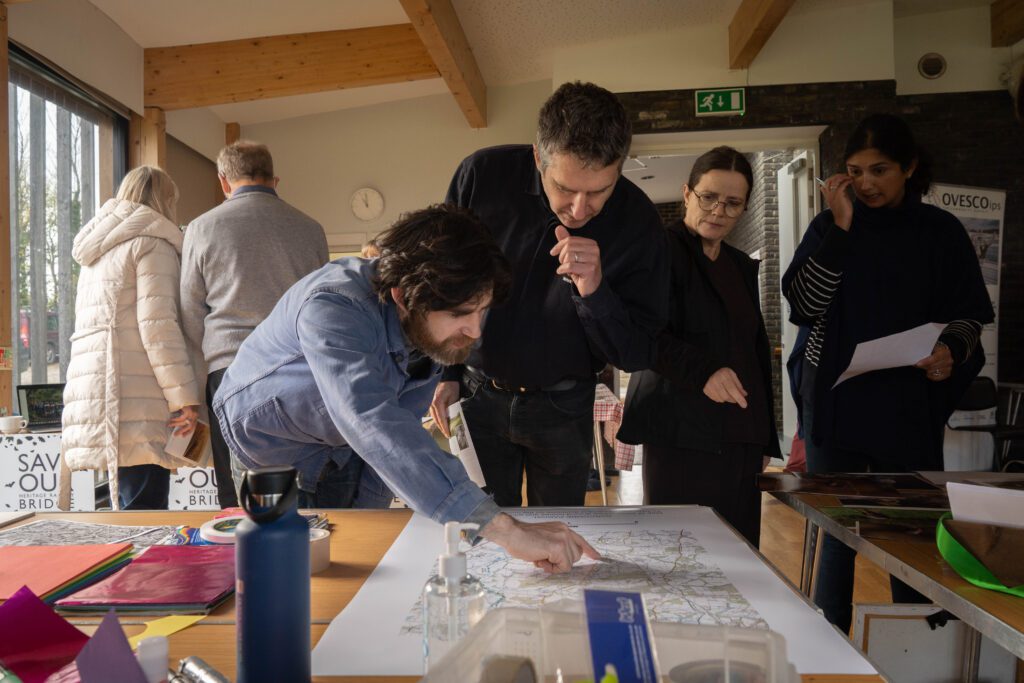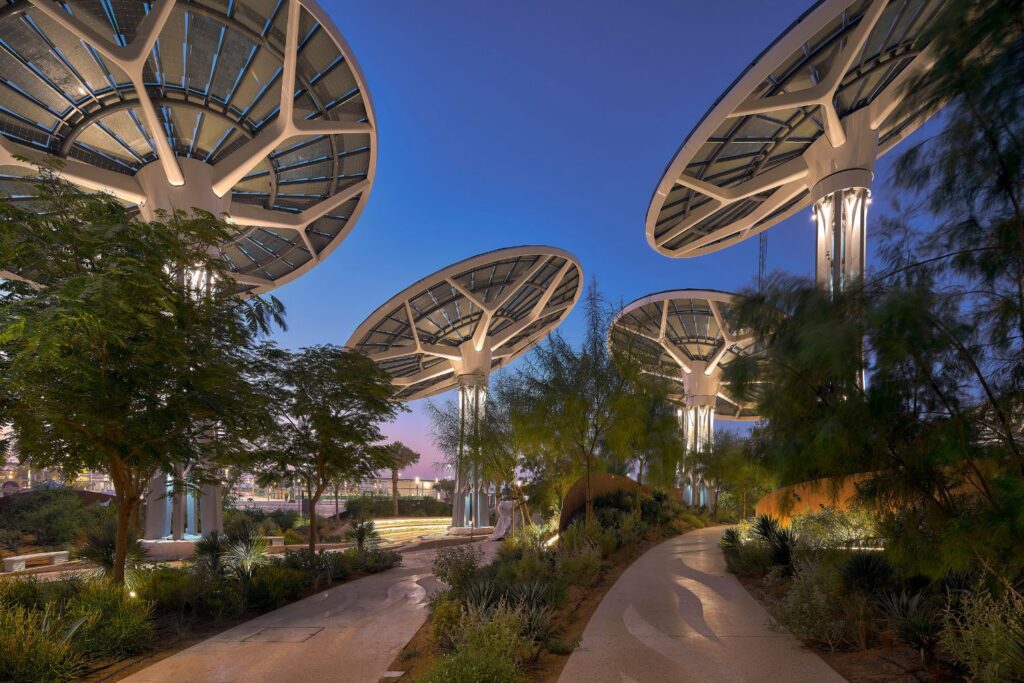Event Recap: Edinburgh Sustainability Sandbox – What does net zero mean to you?
In an intimate session with some of our clients and collaborators in our Edinburgh office, we asked ‘what does net zero mean to you?’
Drawing on each other’s collective experience navigating the changing sustainability landscape in Scotland, the conversation was facilitated by a talk from Associate Directors Sam Haston and Jeremy Murgatroyd. Edinburgh office director Ian Stewart also chaired the dialogue between the guests.
Discussions helped to paint a clear picture of the current struggles and approaches to delivering net zero in the Scottish context. Attendees included representatives from public and private sector clients, project managers, architects and contractors.
Read some of the key points made during the discussion below.

The value of net zero
A key element to the industry’s success will be monetizing how net zero will improve the client’s product.
For some clients, converting the challenge of carbon emissions into a monetary valuation can be the only way to get them on board. Some will always take the easy option if it’s there, so some of the processes are about convincing people of the value of net zero in their projects.
Often in conversations around commercial office lettings, the discussion comes down to cost. Is it cost-effective to rip out equipment that’s only five years old and start to go all-electric, or do you set out a pathway bit by bit? Equally, with increasing energy prices and an environmental movement away from direct fossil fuels, the need to rethink primary energy source has been clearly brought into focus.
Varying definitions of net zero
Understanding a definition and what net zero means for practical project decisions is hugely important.
Part of the current problem is that there are lots of voices out there offering different definitions, but these are slowly aligning. The Net Zero Public Building Standard methodology has emerged from the Government and Scottish Futures Trust, establishing a clear route to net zero for the public sector in this country.
With significant changes to regulation and net zero guidance influencing projects significantly, Buro Happold’s expertise and knowledge have been integral to projects, helping clients to navigate these challenging requirements.

Varying measurements
When looking at Scope One emissions, there are several elements to consider when assessing the impact of your building stock.
Whole life carbon extends not only to operational energy use, but also embodied carbon of materials: ‘up front’ manufacturing, repair and replacement and end of life; travel (corporate GHG emissions) and other wider operational impacts, that paint a whole life picture.
Within the overarching net zero definitions set out by the UKGBC, Scottish Government and others, there are various standards and methodologies by which to evaluate emissions. As such the net zero landscape can be confusing and complicated. The Buro Happold team help to find the solution for each project giving clear understanding of the most appropriate pathway to net zero, tailored to the priorities and context of our clients.
Grid decarbonisation and other avenues
Dealing with old estates can feel like you can only go so far before it gets harder and harder to reduce emissions. Equally, with existing building stock, there is a dependence on the decarbonisation of the grid, which gives an added long-term perspective on potential building interventions.
Carbon offsets have previously been seen as an option to mitigate the impact of old building stock, but there is a trend of moving away from carbon offset credits and towards buying land to rewild or develop renewable resources. This is already being included as part of various university’s biodiversity plans.
The credibility of offsetting may decrease in the future as clients and tenants demand better. Furthermore, with the decarbonisation of the grid, we will face challenges as the cost of offsetting grows.
From some project experiences, district systems sometimes make guarantees around how the grid will be decarbonised so you can base a lot of certification and calculations on that. However, if they then don’t go on to implement it, who is going to be held accountable?
Reflecting on how far we have come
It is worth taking stock of how far we’ve come. Not even five years ago the sustainability conversation would see some clients place their hands over their ears.
Clients are now seeing the urgent need to do something. In the private sector, the commercial market is changing with tenants demanding high performance from their landlords and developers laying out strong ESG commitments. Funders are thinking about the long-term objectives of the fabric in the building too. One key thing they’re thinking about is future flexibility for their assets.
There is also evidence of a welcome behavioural change: from the bare minimum to meet sustainability regulations, to a whole-life approach where there’s full accountability for delivering net zero throughout the project life.

Client Engagement
Increasingly we are seeing the importance of stakeholder engagement and the need for buy in to support investment in net zero. Net zero can present a significant financial burden for our clients, Buro Happold’s approach is to help clients make the first step on the journey by presenting a clear vision in line with their targets. Then it is our role to realise that vision in understandable, practical and financially viable ways, presenting the co-benefits of sustainability, a strong business case and tangible incentive for investment. Bringing our clients along for the journey is key.
Buildings in use
For a long time, Buro Happold has wanted to engage more at RIBA stages 6 and 7, and recently a surge in clients have engaged with us to come back to projects, likely driven by rising energy prices, robust energy targets and in-use validation of design stage commitments.
At this time, across the industry there are difficulties in drawing meaningful data out of buildings. Although monitors are in place, what sounds simple in terms of getting data out and interpreting it, is a lot more complex than that. We’ve come up against hurdles straight away that we didn’t think would be there. More thought needs to go into the preparation, getting the right equipment and the right methodology for monitoring. There’s a time shift between when buildings were conceived and where we are now that needs to be considered.
The Scottish Net Zero Public Sector Building Standard has a clear focus in delivering operational energy targets in use. A robust commissioning, testing, verification and handover procedure is essential and the Standard prompts you to set up a metering and verification plan which enables clear monitoring of regulated and unregulated energy – alignment with a dynamic simulation energy model helps continuity and transparency between design and in use energy.
Change in user behaviour
With recent rises in household utility bills, building users have become more amenable to looking at different ways of working, through awareness of the cost. The key to a lot of reductions will be behavioural change. Building users are aware of their circumstances concerning energy use so now is a really good time to be having those conversations. This comes in tandem with us as a society becoming more educated about the concept of net zero.
The recent crisis has intensified the spotlight on energy use and the importance of monitoring to identify key energy-consuming plans and uses. This level of awareness can lead to changes in operation or behaviour – with many organisations kicking into gear and identifying unnecessary processes and operations which present inefficiencies. Sometimes, simple behavioural changes and changes in occupancy patterns can make a significant difference.
Picking the right time for change
It’s important to take opportunities when they present themselves rather than forcing change. The current state of play is often maintenance when you have to. However, some organisations are starting to look at their maintenance strategy in tandem with their energy strategy, taking opportunities to work on added improvements while attending to maintenance needs.
There also needs to be a consideration for the 20-year timeline. If a building has reasonably good performance with double-glazed windows, there’s no need to replace them. 80% of our building stock for 2050 is already here, so picking the right times to update them is important as we approach that landmark.
Changed building use
At this point, we still don’t know what ‘normal’ is for building use. Since Covid, the way we use buildings has changed. Agile working is great for flexibility, but some office floors now have lights, heating, and ventilation on, but only three people working on them. Helping building users and FM teams know how their building operates and seeing new opportunities for energy reduction is an important part of our role.








